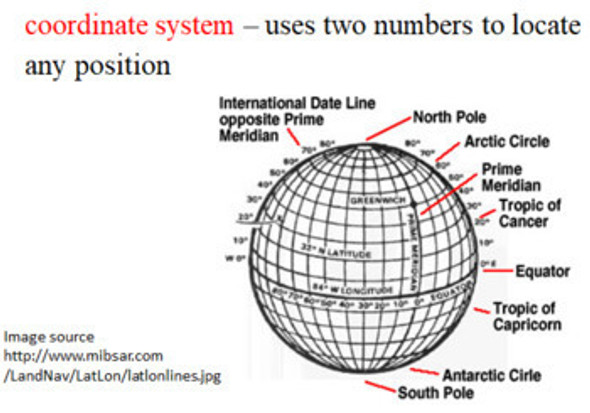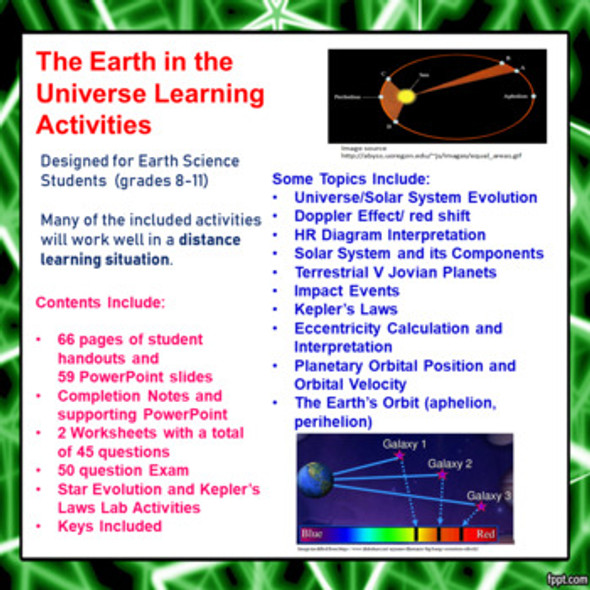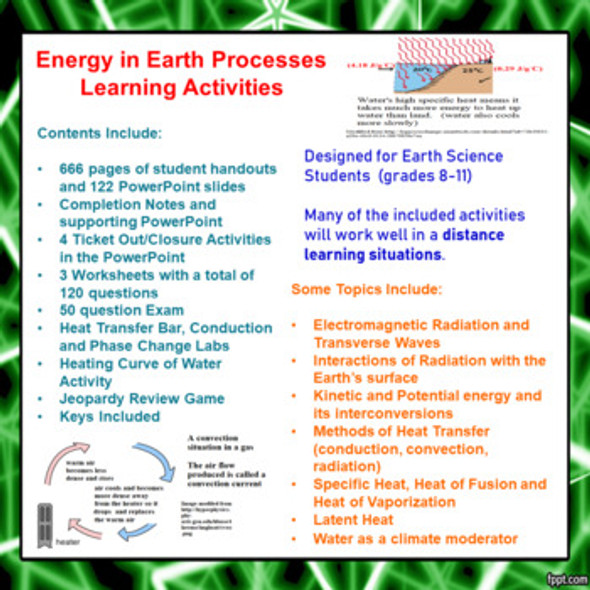Description
This zip file contains many different activities (94 pages of student handouts and a 2 PowerPoints with a total of 144 slides) which can be used to compose a unit introducing concepts involving the Earth and Moon motions in the universe. Some of the concepts addressed include evidences of the Earth's rotation, heliocentric and geocentric models, causes of seasons, characteristics of seasons at different latitudes, Earth and Moon revolution and rotation, Moon phases, tides, eclipses and several other concepts. The learning objectives and specific contents of this set of materials is listed below. This set of activities is suited for many earth science, environmental science or physical science classes. With teacher guidance, many components in these materials are adaptable to an enriched middle level science curriculum.
All documents are in PowerPoint, word or pdf format to allow you to edit the documents to meet your needs. Many of the activities in this package of activities are well suited and easily modified for use in distance learning environments. Answer keys for all student activities are provided.
The specific contents of materials in the package are as follows:
- Motions of the Earth Completion Notes (20 pp.)
- PowerPoint to accompany the Completion Notes with 9 embedded closure/ticket out activities (70 slides)
- Motions of the Earth Jeopardy Game in PowerPoint format (31 questions/answers) (74 slides)
- Angle of Insolation and Solar Intensity Activity (7 pp)
- Angle of Insolation and Heating Effects Lab Activity (10 pp.)
- Earth Motions Worksheet 1 (25 questions) (10 pp.)
- Earth Motions Worksheet 2 (48 questions) (15 pp.)
- Earth Motions Review (55 questions) (17 pp.)
- Earth Motions Exam (50 questions) (15 pp.)
- Learning Objectives including NGSS, Common Core and NY State Core Curriculum (2 pp.)
NGSS Standard
Prerequisite to HS-ESS 1-1
NY State Earth Science/Physical Setting Core Curriculum
Key Idea and/or Performance Indicators Addressed
Standard 1: Mathematical Analysis, Key Idea 1
Standard 1: Scientific Inquiry, Key Idea 1
Standard 6: Key Idea 3, Key Idea 4
Standard 4: Key Idea 1, Performance Indicator 1.1 (Major Understandings 1.1 a, 1.1b, 1.1 d, 1.1 e, 1.1 f. 1.1 g, 1.1 h)
Standard 4: Key Idea 1, Performance Indicator 2.2 (Major Understandings 2.2a)
Common Core State Standards Connections:
ELA/Literacy: WHST.9-12.1, WHST.9-12.2
Mathematics: MP.2, MP.4.
Learning Objectives
Upon the completion of this unit the student will be able to:
1. explain what is meant by apparent motion.
2. recognize star trail patterns and the rising/setting of the Moon and Sun are due to the Earth's rotation.
3. explain why the Earth's revolution around the Sun produces different constellations being visible throughout the year.
4. explain the cause of the retrograde motion of the planets.
5. explain why the Moon keeps its same side toward the Earth.
6. describe the rotation and revolution of the Moon in relation to the Sun and the Earth.
7. state the angular rate of rotation and revolution of the Earth and Moon.
8. explain the cause of the seasons.
9. compare and contrast the difference between seasonal starting dates at the equator, Arctic and Antarctic Circles and Tropics of Cancer and Capricorn in terms of; solar altitude, intensity of insolation, duration of insolation and apparent daily path of the Sun.
10. describe the shadow cast by the Sun on various dates and times in its apparent path.
11. interpret the Sun's path on hemispheres and diagrams.
12. discuss how and why the angle of insolation influences the intensity of insolation.
13. list and discuss several evidences of the Earth's rotation; including the Foucault pendulum and Coriolis Effect.
14. define the following terms as related to Earth time; day, mean solar day, solar noon and year.
15. recognize the sundial is used to measure solar time.
16. explain how and why the position of the Earth in its orbit influences the length of a solar day.
17. explain how time zones on the Earth are determined.
18. explain why the cycle of Moon phases and its period of revolution are slightly different in length.
19. given a diagram, identify the phases of the Moon.
20. compare and contrast the geocentric and heliocentric models of the solar system.
21. identify the cause of tides.
22. recognize tides as well as many astronomical events are cyclic and predictable.
23. distinguish between spring and neap tides.
24. describe the alignment of the Sun, Moon and Earth during spring and neap tides.
25. explain what an eclipse is
26. describe the alignment of the Sun, Moon and Earth during solar and lunar eclipses.
27. explain why lunar eclipses do not occur during every full Moon.
Terms of Use
Purchase of the product is for classroom use by the purchaser only. It is a violation for individuals, schools, and districts to redistribute or sell this item on the Internet or to other individuals. I do encourage you to use and edit these documents to suit your needs with your own students in distance learning environments.
This work is licensed under a Creative Commons Attribution-NonCommercial-ShareAlike 4.0 International License.

























